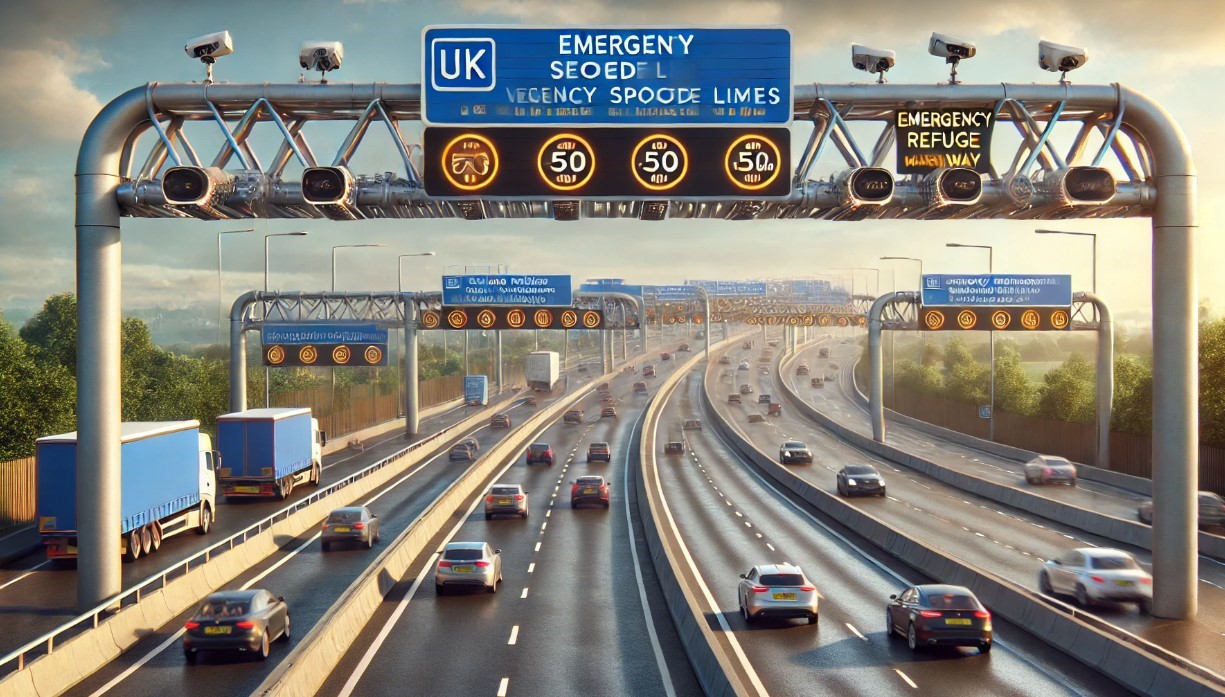The UK’s motorway system is a critical part of its transport infrastructure, accommodating millions of drivers daily. However, with increasing population growth, urban expansion, and more vehicles on the road, traffic congestion has become a significant challenge.
One of the most common issues is traffic bunching, where vehicles cluster together, leading to slower travel times and increased risks of accidents.
Smart motorways are designed to combat these challenges through advanced traffic management techniques. They represent a modern, technology-driven solution to keep vehicles moving smoothly, reduce congestion, and improve safety.
This blog how do smart motorways prevent traffic bunching explores the inner workings of smart motorways and how they effectively prevent traffic bunching in the UK.
What Are Smart Motorways?
Smart motorways are a transformative approach to road infrastructure, designed to optimize traffic flow, enhance safety, and reduce congestion on some of the UK’s busiest highways.
By integrating advanced technologies, these motorways adapt dynamically to real-time traffic conditions, addressing challenges that traditional motorways cannot efficiently manage.
Here’s a detailed breakdown of what smart motorways are and how they function:
The Concept Behind Smart Motorways
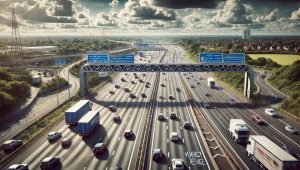
Traditional motorways operate on fixed rules, with designated lanes for travel, a hard shoulder for emergencies, and static speed limits. While this system works under normal conditions, it struggles during peak times, accidents, or road maintenance.
Smart motorways revolutionize this approach by using technology-driven traffic management systems. They employ sensors, cameras, and dynamic signage to monitor and control traffic flow.
This allows the motorway to adjust in real time, ensuring optimal use of available road space and maintaining consistent traffic movement.
Types of Smart Motorways in the UK
1. All Lane Running (ALR) Motorways:
- Hard shoulders are permanently converted into regular lanes, increasing capacity by up to 33%.
- Emergency refuge areas (ERAs) are placed strategically for vehicles in need of assistance.
2. Controlled Motorways:
- Retain a hard shoulder for emergencies but operate with variable speed limits to manage traffic flow.
3. Dynamic Hard Shoulder (DHS) Motorways;
- The hard shoulder is used as a running lane during peak traffic hours, with clear indications via overhead gantries.
- These types of motorways balance the need for greater capacity with safety and efficiency.
How Does Traffic Bunching Occur on UK Motorways?
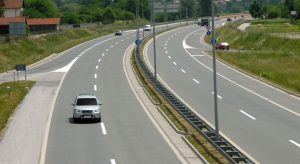
Traffic bunching, or “phantom traffic jams,” is a complex phenomenon caused by human and environmental factors. It often happens even when there are no apparent blockages or accidents.
Key Causes of Traffic Bunching
1. Driver Behaviour:
- Tailgating: Following vehicles too closely causes drivers to brake suddenly, creating a chain reaction of braking.
- Speed Fluctuations: Inconsistent driving speeds disrupt the natural flow of traffic.
2. Bottlenecks:
- Lane reductions, junctions, or construction zones can cause vehicles to merge, leading to slowdowns.
3. High Traffic Volumes:
- During rush hours, the sheer number of vehicles overwhelms the road’s capacity, forcing traffic into tighter clusters.
4. Accidents and Road Incidents:
- Even minor accidents can result in significant delays as drivers slow down to navigate or look at the scene (commonly known as “rubbernecking”) and also drivers need instructor training to avoid accidents,
- Traffic bunching not only delays journeys but also contributes to driver frustration, higher fuel consumption, and increased emissions.
How Do Smart Motorways Prevent Traffic Bunching in the UK?
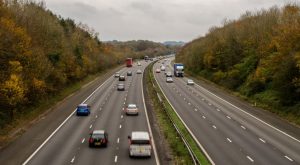
Smart motorways are designed to tackle one of the most frustrating and costly aspects of driving: traffic congestion. Traffic bunching, in particular, is a phenomenon where vehicles cluster too closely, causing a domino effect of stop-and-go movements that worsen congestion.
Smart motorways use advanced traffic management technologies and strategies to combat this issue efficiently. Here’s a deeper look at how these innovative systems prevent traffic bunching on UK motorways.
1. Variable Speed Limits: Managing Traffic Flow in Real Time
One of the most effective tools in preventing traffic bunching is the use of variable speed limits, which are displayed on overhead gantries along the motorway.
These speed limits are not fixed; they adjust dynamically based on traffic conditions detected by sensors and monitoring systems.
How Variable Speed Limits Work?
When traffic monitoring systems detect that vehicles are slowing down ahead, due to high volume, merging lanes, or an accident—the speed limits on the gantries upstream are lowered. This gradual reduction in speed prevents sudden braking, a primary cause of traffic bunching.
Benefits:
- Promotes steady, consistent traffic speeds.
- Reduces the “accordion effect” of stop-and-go movements.
- Lowers the risk of rear-end collisions caused by sudden braking.
For example, if an incident causes traffic to slow from 70 mph to 30 mph near a junction, variable speed limits might gradually reduce speeds to 60 mph, then 50 mph, and so on, creating a smoother transition for vehicles approaching the area.
2. Dynamic Lane Management: Maximising Road Capacity
Smart motorways excel at utilising every inch of road space effectively through dynamic lane management. This involves opening or closing lanes, including the hard shoulder, based on real-time traffic demand.
Hard Shoulder as a Running Lane:
In All Lane Running (ALR) and Dynamic Hard Shoulder (DHS) motorways, the hard shoulder can be opened for regular traffic during peak times. This provides additional capacity, distributing vehicles across more lanes and reducing bottlenecks.
Overhead Gantry Signs:
Clear signage on overhead gantries directs drivers to available lanes or signals closed lanes due to incidents. This helps to:
- Avoid abrupt lane merging, a common cause of congestion.
- Maintain a balanced flow of vehicles across all lanes.
By managing lanes dynamically, smart motorways ensure that no single lane is overwhelmed, thereby preventing the build-up of traffic.
3. Traffic Monitoring Systems: Proactive Congestion Management
Smart motorways rely on an intricate network of sensors, cameras, and algorithms to monitor traffic conditions 24/7. These systems provide real-time data on vehicle speeds, traffic density, and incidents.
Sensors in the Road:
Inductive loop sensors embedded in the road measure the speed and flow of vehicles at various points. When these sensors detect a drop in speed or increased congestion, they trigger automatic adjustments to speed limits and lane usage.
CCTV Cameras:
High-resolution cameras provide visual confirmation of incidents or obstructions, allowing control centers to respond quickly and implement appropriate measures.
AI-Driven Algorithms:
Advanced algorithms analyze traffic patterns and predict congestion before it occurs. By acting preemptively, smart motorways can prevent traffic bunching from developing into full-scale gridlock.
For instance, if the system detects a significant increase in vehicles near a busy interchange, it might lower speed limits and open additional lanes to maintain traffic flow.
4. Real-Time Communication with Drivers
Effective communication is crucial to ensuring drivers adapt their behaviour to the motorway’s dynamic conditions. Smart motorways use multiple channels to inform drivers about changes, helping to prevent confusion and maintain a steady flow of traffic.
Overhead Gantries:
The gantries display critical information, including:
- Current speed limits.
- Lane availability.
- Warnings about upcoming hazards or delays.
Variable Message Signs (VMS):
Additional signs along the motorway provide updates on roadworks, weather conditions, or accidents ahead.
Future Innovations:
- Integration with in-car systems to provide real-time alerts directly to drivers.
- Connected vehicle technologies that allow cars to communicate with motorway systems for automated adjustments.
- This real-time guidance ensures that drivers can adjust their speed and lane choices well in advance, reducing the risk of abrupt braking or erratic driving.
5. Preventing the “Shockwave Effect”
One of the key goals of smart motorways is to eliminate the “shockwave effect” of traffic bunching. This occurs when a single event—such as sudden braking—triggers a chain reaction, causing vehicles behind to brake harder and more frequently.
How Smart Motorways Address This?
- Gradual Speed Reductions: Variable speed limits create a ripple effect of smoother, more predictable driving.
- Controlled Lane Changes: Dynamic lane management reduces the chaos of merging, ensuring a more orderly flow.
- Accident Management: Rapid detection and response to incidents minimize disruptions, preventing long-lasting congestion.
By breaking the chain of events that lead to the shockwave effect, smart motorways keep traffic moving more predictably and efficiently.
6. Enhancing Safety While Managing Traffic
Preventing traffic bunching isn’t just about reducing delays; it’s also a critical safety measure. Congested traffic increases the likelihood of rear-end collisions, lane-change accidents, and driver fatigue. Smart motorways tackle these issues by:
Maintaining Predictable Speeds:
- Drivers can anticipate changes well in advance, reducing sudden decisions.
Reducing Lane-Change Incidents:
- Clear lane management minimizes risky merging behavior.
Ensuring Quick Incident Response:
- Traffic officers and emergency responders are alerted immediately via monitoring systems, allowing for rapid action.
What Technologies Are Used in Smart Motorways to Reduce Congestion?
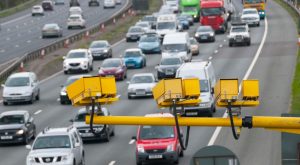
1. Artificial Intelligence and Predictive Algorithms
AI systems analyze traffic data and predict congestion patterns. This allows motorway control centers to take preemptive measures, such as lowering speed limits before traffic bunching occurs.
2. Inductive Loop Sensors
These sensors, embedded in the road, measure vehicle density and speed at multiple points. The data is used to assess traffic conditions and adjust operations in real time.
3. CCTV Cameras and ANPR Systems
CCTV cameras provide live visuals, while Automatic Number Plate Recognition (ANPR) systems track vehicle movement to detect congestion hotspots and monitor compliance with speed limits.
4. Smart Communication Tools
- In-Car Alerts: Future integration with connected vehicles will allow real-time updates directly to drivers’ dashboards.
- Integration with Navigation Apps: Drivers can receive live updates about smart motorway conditions through GPS systems.
Why Are Emergency Refuge Areas Important on Smart Motorways?
One of the biggest challenges in implementing smart motorways is public concern over the removal of hard shoulders. Emergency Refuge Areas (ERAs) address this by providing safe zones for vehicles in distress.
Features of ERAs:
- Strategic Spacing: Positioned every 1.5 miles to ensure accessibility.
- Clear Markings: Highlighted with bright colors and prominent signage for visibility.
- Monitoring: Equipped with CCTV cameras and emergency telephones directly connected to control centers.
While ERAs are a compromise, they are designed to maintain safety without sacrificing lane capacity.
What Is the Role of Collaborative Traffic Management in Smart Motorways?
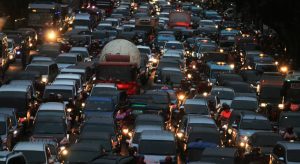
The success of smart motorways depends on effective collaboration between technology, traffic officers, and drivers.
- Traffic Technology: Automated systems manage congestion, reducing the need for human intervention in routine traffic conditions.
- Traffic Officers: Officers monitor smart motorways for incidents, provide assistance, and ensure smooth operations during emergencies.
- Drivers: By adhering to speed limits and lane instructions, drivers play a critical role in the overall efficiency of the system.
What Are the Benefits of Reducing Traffic Bunching on UK Roads?
Smart motorways offer a host of benefits by reducing traffic bunching:
- Smoother Journeys: Consistent speeds lead to shorter and less stressful travel times.
- Improved Safety: Reducing sudden braking and stop-start driving lowers accident rates.
- Environmental Gains: Efficient driving reduces fuel consumption and CO2 emissions, contributing to cleaner air.
- Economic Benefits: Less congestion means fewer delays for goods transportation, improving productivity.
- Better Road Utilization: Maximizing existing road capacity reduces the need for costly expansions.
What Are the Criticisms and Concerns About Smart Motorways?
- Safety Concerns: The removal of permanent hard shoulders has sparked debate, with some citing risks for stranded vehicles.
- Public Confidence: Many drivers are unfamiliar with smart motorways, leading to confusion and hesitation. Public education campaigns are needed to address this gap.
- Technical Limitations: Equipment malfunctions, such as faulty gantries or delayed updates, can compromise efficiency and safety.
What Is the Future of Smart Motorways in the UK?
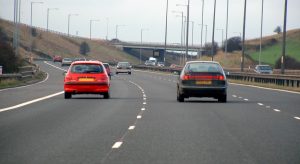
The future of smart motorways involves greater integration with emerging technologies and enhanced safety measures.
- Autonomous Vehicles: Smart motorways will be integral to supporting self-driving cars, enabling seamless communication between vehicles and road systems.
- Enhanced Emergency Refuge Areas: Plans are underway to increase the frequency and accessibility of ERAs to address safety concerns.
- Improved Data Analytics: Advances in AI will enable more accurate predictions and faster responses to traffic conditions.
Conclusion
Smart motorways are a transformative solution to one of the UK’s most pressing traffic issues. By combining real-time data, dynamic management, and advanced communication, they significantly reduce traffic bunching and improve road efficiency.
While challenges remain, the ongoing evolution of smart motorways, coupled with driver education and safety enhancements, promises a brighter future for UK roads. Embracing these innovations is essential to meeting the growing demands of modern transportation.
FAQ Section
What is traffic bunching, and why is it a problem?
Traffic bunching occurs when vehicles cluster together due to inconsistent speeds or bottlenecks, leading to congestion, delays, and accidents.
How do variable speed limits help with traffic flow?
By adjusting speeds dynamically, variable speed limits prevent sudden braking and maintain smoother traffic movement.
Are smart motorways safe to use?
Yes, but concerns about the removal of hard shoulders have prompted the addition of emergency refuge areas and enhanced monitoring systems.
What happens if there’s an accident on a smart motorway?
Control centers are alerted via cameras and sensors. Traffic officers manage incidents, and gantries provide updates to drivers.
Why were smart motorways introduced in the UK?
To address rising traffic volumes without the need for costly road expansions, improving capacity and efficiency.
How are smart motorways monitored?
CCTV cameras, sensors, and AI systems provide continuous updates on traffic conditions and incidents.
What’s the future of smart motorways in the UK?
The integration of autonomous vehicles, advanced AI, and improved safety features will define the next generation of smart motorways.

